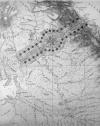Resumen
La definición de la nacionalidad colombiana en el siglo xix tuvo su etapa culminante durante las exploraciones de la ComisiónCorográfica de la Nueva Granada (1850-1858). La necesidad de conocer el tamaño, la forma y los contenidos del virreinato,exigió durante décadas los estudios que resolvieran tantas incógnitas. Estudios que cada vez se sustentaran más sobre basescientíficas. La Comisión Corográfica aportó el más importante volumen de datos sobre la realidad natural, material, económica,cultural y social del país, y mostró su especificidad respecto a las demás ex colonias independizadas. Entre sus característicasmás auténticas, destacó su condición geográfica abierta a los dos océanos del globo, y a estudiar esa particularidad sedirigieron buena parte de los estudios científicos, relaciones internacionales, actividades comerciales, planes de ocupaciónterritorial e ideas de la infraestructura posible. La más importante de estas últimas fue la del canal interoceánico. Hacia elladirigió tiempo y recursos la Comisión, produciendo en 1854 el Informe más preciso sobre la factibilidad del Canal y su delineacióndefinitiva. El rol del Jefe de la Comisión, Agustín Codazzi, fue decisivo en la definición del territorio neogranadino y ensus recomendaciones sobre la vía entre el Caribe y el Pacífico.La revista Apuntes se encuentra registrada bajo la licencia Creative Commons Reconocimiento 4.0 Internacional. Por lo tanto, esta obra se puede reproducir, distribuir y comunicar públicamente en formato digital, siempre que se reconozca el nombre de los autores y a la Pontificia Universidad Javeriana. Se permite citar, adaptar, transformar, autoarchivar, republicar y crear a partir del material, para cualquier finalidad (incluso comercial), siempre que se reconozca adecuadamente la autoría, se proporcione un enlace a la obra original y se indique si se han realizado cambios. La Pontificia Universidad Javeriana no retiene los derechos sobre las obras publicadas y los contenidos son responsabilidad exclusiva de los autores, quienes conservan sus derechos morales, intelectuales, de privacidad y publicidad.
El aval sobre la intervención de la obra (revisión, corrección de estilo, traducción, diagramación) y su posterior divulgación se otorga mediante una licencia de uso y no a través de una cesión de derechos, lo que representa que la revista y la Pontificia Universidad Javeriana se eximen de cualquier responsabilidad que se pueda derivar de una mala práctica ética por parte de los autores. En consecuencia de la protección brindada por la licencia de uso, la revista no se encuentra en la obligación de publicar retractaciones o modificar la información ya publicada, a no ser que la errata surja del proceso de gestión editorial. La publicación de contenidos en esta revista no representa regalías para los contribuyentes.


